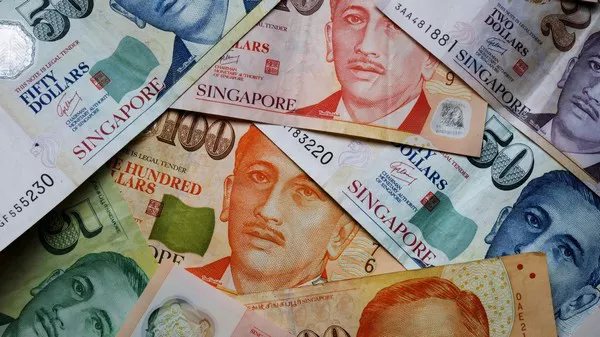The Singapore dollar (SGD) is the cornerstone of the Republic of Singapore’s modern financial landscape, emblematic of its remarkable journey from colonial rule to a global financial hub. This article embarks on a historical voyage to explore when and how the Singapore dollar was introduced as the official currency, shedding light on the economic and political factors that shaped this significant milestone.
Colonial Currency: Pre-Independence Singapore
Before the emergence of the Singapore dollar, the island’s currency landscape was characterized by the currencies of various colonial powers that had laid claim to the region over the centuries:
Spanish Dollars: The Spanish dollar, also known as the “pieces of eight,” was a widely used trade currency during the colonial period. It bore significant influence in Southeast Asia, including Singapore.
Straits Settlements Currency: In the late 19th century, the British established the Straits Settlements, which included Singapore, as a unified colonial entity. The Straits dollar, issued by the British government, became the official currency.
Japanese Occupation: During World War II, the Japanese occupation saw the introduction of Japanese-issued currency in Singapore, replacing the Straits dollar.
Post-War Period: After the war, Singapore reverted to using the Straits dollar until it joined the Federation of Malaysia in 1963.
Independence and Separation: The Birth of the Singapore Dollar
The pivotal moment in the history of the Singapore dollar came with Singapore’s separation from Malaysia on August 9, 1965. This separation marked the birth of the Republic of Singapore as an independent nation.
Malaysian Dollar: When Singapore was part of Malaysia, it used the Malaysian dollar as its official currency, which was issued by the Board of Commissioners of Currency, Malaya, and British Borneo.
Currency Changeover: Following the separation, Singapore needed to establish its currency. The government swiftly initiated the process of creating a unique and independent currency system.
The Road to the Singapore Dollar: A Strategic Vision
The introduction of the Singapore dollar was a result of meticulous planning and strategic decision-making. Key factors in this process included:
Formation of the Currency Board: The Currency Interchangeability Agreement (CIA) was signed between Singapore and Brunei Darussalam in 1967, allowing the two countries to interchangeably use their respective currencies (Singapore dollar and Brunei dollar) at par. This provided a solid foundation for the SGD.
Establishment of the Monetary Authority of Singapore (MAS): The MAS was founded in 1971 and became the sole issuer of currency in Singapore. It was responsible for managing monetary policy and currency issuance.
Currency Design: Singapore commissioned currency notes and coins, with distinctive designs featuring Singapore’s national symbols, iconic landmarks, and leaders.
Official Launch of the Singapore Dollar
On April 7, 1967, the Singapore dollar was officially introduced as the nation’s currency. The momentous occasion was marked by a changeover campaign that informed the public about the transition and encouraged them to exchange their old currency for the new SGD.
Reasons for Introduction: The transition to the Singapore dollar was driven by the need for monetary independence and the desire to assert Singapore’s sovereignty.
Initial Banknotes and Coins: The SGD was launched with banknotes in denominations of $1, $5, $10, $50, and $100, as well as coins in denominations of 1 cent, 5 cents, 10 cents, 20 cents, and 50 cents.
Economic Impact and Stability
The introduction of the Singapore dollar had far-reaching implications for the newly independent nation:
Economic Stability: The establishment of a stable and independent currency was a crucial step in ensuring economic stability and fostering investor confidence.
Control Over Monetary Policy: The Singapore government and the MAS gained control over monetary policy, allowing them to manage inflation, interest rates, and exchange rates effectively.
Global Recognition: The Singapore dollar quickly gained international recognition as a strong and stable currency, facilitating trade and investment.
Currency Evolution and Modernization
Over the years, the Singapore dollar has continued to evolve, adapting to the changing needs of the nation’s economy and financial landscape:
Polymer Banknotes: Singapore introduced polymer banknotes in 1990 to enhance durability and security. These banknotes are more resistant to wear and tear compared to paper notes.
Advanced Security Features: The SGD incorporates advanced security features, including holograms, color-shifting ink, and hidden images, to deter counterfeiting.
Innovative Designs: Singapore frequently issues commemorative banknotes and coins, celebrating various milestones, cultural events, and achievements.
Digital Currency Exploration: The MAS has been exploring the possibility of Central Bank Digital Currency (CBDC) as part of Singapore’s ongoing efforts to modernize its currency system.
Conclusion
The introduction of the Singapore dollar as the official currency in 1967 marked a significant turning point in the history of Singapore. It represented the nation’s determination to assert its sovereignty and establish an independent monetary system. Today, the Singapore dollar stands as a symbol of economic stability, financial innovation, and the remarkable journey of a nation that has risen to become a global financial powerhouse.


